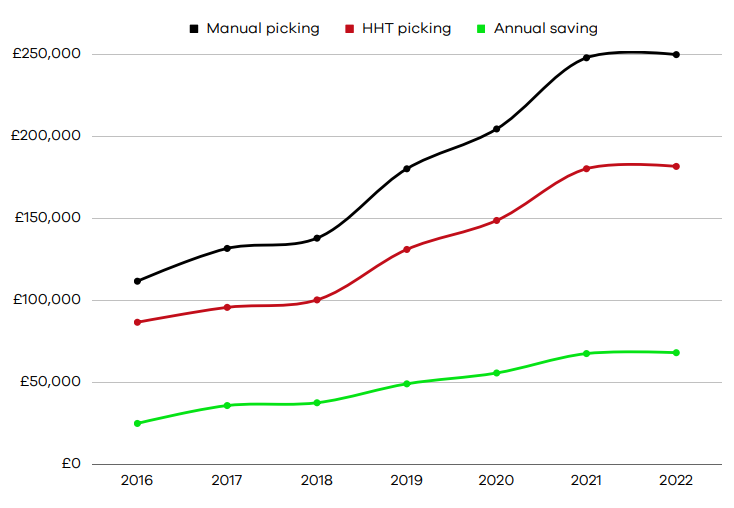School Blazer Ltd
An Automation Journey
Based on a presentation by Sean Ryan, Operations Director
Schoolblazer are the UK’s leading supplier of independent school uniform and sportswear, with a deep commitment to sustainability and fair trade. They have a relentless focus on customer satisfaction delivered via their innovative website, investment in service, and garment quality. They now serve over 220 Schools.
These schools have joined Schoolblazer from a variety of different retail channels; some were running their own shop, others were using a local independent shop and some were using our competitors. They have moved all of these schools to a full online provision.
As online experts, they have focussed on providing design and product innovation to their schools, including bespoke, modern tailoring and high-performance sportswear. They deliver shopping convenience for parents, with free name-taping and intelligent sizing.
Warehouse Management Software (WMS)
In 2016, Schoolblazer decided to upgrade their OMS system to a WMS system. A combination of increased order volumes, inventory inaccuracy, missed picks, missing orders, and slow despatches were amongst the issues that needed to change.
They needed more stock and order fulfilment visibility, a smoother dispatch API to connect to their couriers and a broader look into their supply chain. After 6 months of UAT, they went live.
On the basis of the WMS introduction:
- Inventory accuracy improved to 99.9%
- Incorrect orders sent dropped to 0.05%
- Average shipping time fell to 2 days.

Handheld Terminals (HHT)
After Schoolblazer installed WMS, they decided to add some HHT to their operation. A YOY increase in new school contracts and additional volumes meant they needed to increase productivity to handle demand. They knew they would also see an improvement in pick accuracy, cycle counting, replenishment etc.
There was a lot of work to do before putting the HHT live to ensure they would work effectively. For example, Schoolblazer had to barcode all of their warehouse locations (20,000) and products (200,000 items) as well as ensure that all of their suppliers were barcoding product at source

The initial investment on the HHT was around £100,000, this includes the hardware and preparation work carried out beforehand.
An increase in picking rate was seen immediately, to 55 items per person per hour from 40. The HHT were able to give pickers the quickest route around the warehouse and eliminated pick errors.
Overall, their pick rate increased from an average of 40 items P/hr, P/person to around 55. The ROI came in just 18 months.
The graph below shows the annual labour costs comparing manual picking and HHT picking. Since going live with HHT, their cost saving is
estimated at around £335,000 (over 7 years).

Schoolblazer's next automation project is linked to their sewing unit. They offer a free name taping service. In 2022, they applied 800,000 nametags to garments. By 2025 the volume will increase to 1,000,000+ nametags annually.

To find out more visit https://www.schoolblazer.com/

